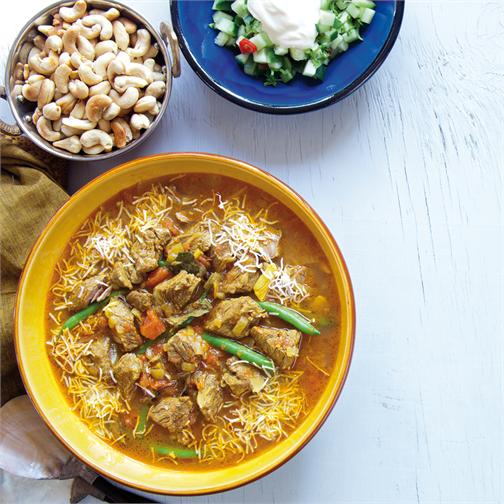The BIG Guide to Chillies
The BIG Guide to Chillies
The most popular chillies from around the world

Chillies are a spice used in every part of the world. They provide one of the basic flavours and is an essential part of many traditional dishes. There are many different kinds of chilli peppers used across the world. Chillies from Mexico are different from the chillies in India or China, and then there is the branch of European chillies too. These varieties all complement their national cuisine in their own unique ways. Even though the primary flavour given by chillies is spice, they are more complex and have other flavour notes too.
Heat levels in chillies are measured using Scoville Heat Units (SHU). The way the scale works, is by adding a mix of sugar-water to the essential oil found in chillies (Capsaicin). The chillies are gradually diluted with more sugar-water until the Heat can no longer be tasted. This gives it it’s SHU. If no spice can be detected in the first place, then those chillies have an SHU of 0.
How to use them
The most basic principle of picking which chilli is first by getting chillies from the same origin as the cuisine you want to cook them in. Of course, mixing chillies can lead to some exceptional results too, but for that a little more trial and error is needed. Luckily, we’ve done the bulk of this experimenting for you with the most popular chillies from around the world.
When picking chillies, first smell them! Smelling will give you a very fresh idea on what the chilli is all about. Contrary to what you may expect, they all smell distinctly different. These different smells let you judge what they would work well with. For example, good quality Bird’s Eye Chillies smell close to Bay Leaves or Hay. This let’s you add new levels of flavour to your cooking.
Popular chillies for households, and when to use them
Bird’s Eye Chillies: While these originated in Thailand, these chillies are now grown all across Asia and thus work in many types of oriental cuisines. They’re best for Thai, Vietnamese and Indian dishes, where the herbal flavours from within the chillies complement these regions foods. The pungency is a cross between mustard and tabasco, so they can also on occasion be used for western cooking. For example, we’ve found Bird’s Eye Chillies to work excellently in an Arrabbiata sauce to provide a precise amount of heat.
Cayenne Pepper: This pepper is most popularly used for powdering, as it’s relatively cheap, hot, and usually has a decent colour. However, the amount of heat in Cayennes varies tremendously from 30,000 – 50,000+ SHU, so they’re not for the spice-shy. Cayenne’s work great in their local Mexican cuisine, but can also be used in other types of cooking. We’ve found that they work very well with sauces that also use vinegar, as the spice provided by the Cayenne perfectly complements the sour in the common vinegars. Cayenne Peppers are also popular in spice rubs.
Tianjin Chillies: A strong chilli, often used to pack a punch in barbequed dishes, spice rubs, and curries where higher levels of heat are preferred (specifically 20000-30000 SHU). These chilies are perfect for stir fries, and most Oriental cooking. They have a strong flavour, so one pod is enough for 2-3 servings. They also carry a herbal aroma, and deeper flavour than most cooking chillies, which is why they work particularly well over longer cooking periods. These qualities make them the preferred all-round red chili variety.
Yidu Chillies: Amicably known as the sauce chili, Yidu is a chili variety known for its prime use in stews, sauces and rubs. Yidu is one of the rare chilies that looks exceptionally bright on the inside as well as on the outside, with a medium heat level (specifically 10,000-13,000 SHU), so it is commonly used to adjust the colour profile of dishes while providing them with a mellow heat level.
Jalapeño: This is another very popular chilli from Mexico, and is sometimes mild enough to eat by itself. It also works well for pickling, in sandwiches, salads, and for any mild-medium heat sauce based dishes. The spice in Jalapeños is different from other chillies, and is closer to green bell peppers. It provides a very strong flavour similar to mustard and fenugreek, and thus also works fairly well in Indian cooking.
Teja Chillies: These are the most popular Chillies in Indian cooking. They’re very potent, so just 1-2 pods are enough to provide a strong spice for 3-4 servings. Because these chillies are so popular, they are now cultivated around the world. As a result, their flavour can vary a large amount: sometimes they have citrus notes to complement curries, and sometimes they have more bitter undertones that need work on. In either case, these Chillies have a wonderful colour, so they’re often used in 1 tsp quantities to turn most food to a deep red.
Recipe: Lamb Madras
Ingredients – 4 Servings
For the curry powder (makes about 75 grams)
2 tbsp Coriander Seeds
2 tbsp Fenugreek Seeds
1 tbsp Black Mustard Seeds
1 tsp Cumin Seeds
½ tsp Green Fennel Seeds
1 tsp Black Peppercorns
1 Cinnamon Stick, broken into pieces
5 Cloves
1 tbsp ground Turmeric
Other ingredients
4 Lamb Shanks
2 tbsp Vegetable oil
3 Tianjin Chillies
2-3g dried garlic flakes
5g dried ginger root
1 tsp Cane Sugar
10g dried onion slices
12 Curry Leaves
3 Green Cardamom Pods
2 Bay Leaves
400g Chopped Tomatoes
250ml / 1 cup Vegetable Stock
2 tsp Tamarind Juice
5 tsp Lemon Juice
1 tbsp freshly chopped Coriander
1 tbsp fresh chopped Mint
Salt and freshly ground Black Pepper for seasoning
Method
Lightly fry all the curry powder ingredients on dry heat for 30 seconds – 1 minute. Then grind them. If you’re not sure how, here is our grinding guide.
Season the Lamb Shanks all over with Salt and freshly ground Black Pepper. Heat the vegetable oil in a large non-stick casserole pan and sear the Lamb Shanks for 1-2 minutes on all sides, or until golden-brown all over. Remove the lamb shanks from the pan and set aside.
Now blend the Chillies, Garlic, Ginger and Sugar to a paste, adding a splash of water if necessary. We suggest a pestle and mortar or food processor for this.
Place the pan used to cook the lamb back over a high heat and add the onion. Fry for 2-3 minutes, or until softened and starting to colour. Add 2½ tablespoons (approx 40 grams) of the Curry Powder to the pot along with the Garlic, Chillies and Ginger Paste, Curry Leaves, Cardamom and Bay Leaves. Stir well.
Return the lamb shanks to the pan and cover by adding the Chopped Tomatoes, Vegetable Stock and Tamarind juice. Season, to taste, with salt and freshly ground black pepper. Cover the pan with a lid and simmer over a low heat for two hours, or until the lamb is very tender. Finish with the lemon juice. Just before serving, stir the coriander and mint into the curry and heat for another minute.
This curry tastes great with rice or traditional Indian Naan.

























